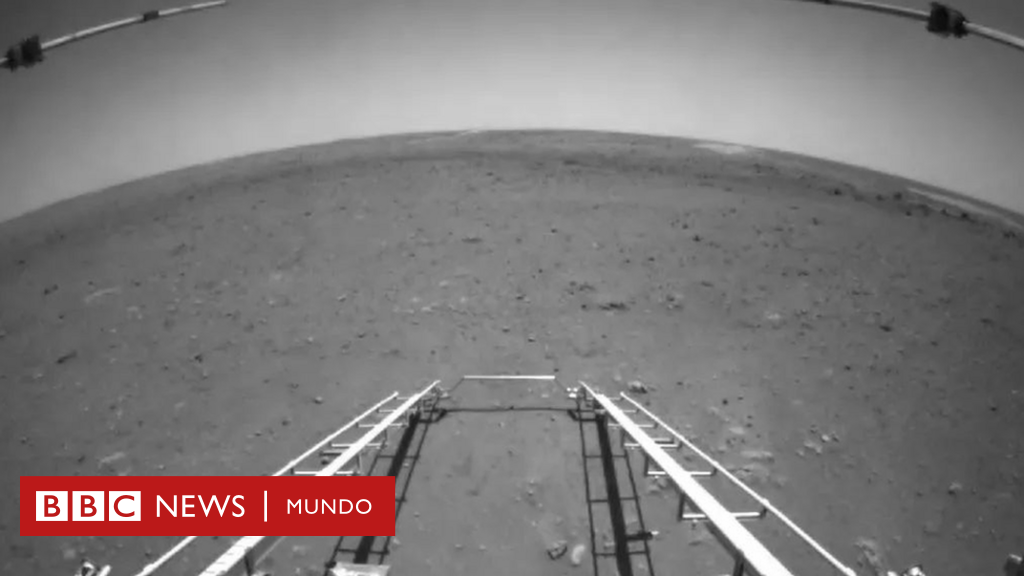- Jonathan Amos
- BBC Science Reporter
Image source, CNSA
The front pictures show the flat terrain of Utopia Planetia.
China has released the first images since its rover robot Jurang landed on Mars.
The front view shows the terrain as the robot hovers on its landing pad.
The picture facing the back reveals Jurong’s solar panels.
The rover landed on the Red Planet early Sunday morning, according to local Beijing time.
China thus became the second country after the United States to successfully place a robot on the surface of Mars. Use it for a significant amount of time.
Chinese scientists hope to have at least 90 days of service from a six-wheeled robot to Utopia Planetia, a vast landmass in the northern hemisphere of the planet.
Image source, CNSA
Rear pictures show the robot’s solar panels and antenna communication system.
The photos were published by the Chinese National Space Administration (CNSA) on its website.
There are even a couple of short videos About the moment Aeroshell The robot, the capsule it used to enter the Martian atmosphere, takes off from the orbit of Tianwen-1, the satellite that carried the robot from Earth.
Successful landing
Images coming from the surface indicate that critical hardware deployment was completed without a hitch after landing.
These maneuvers include the use of solar panels Giving power to the robot; Introducing the antenna to communicate with Tianwen-1, now with controllers in China; And the length of the curve that Jurang quickly bends to begin his mobile mission.
The Jurong looks like the Spirit and Opportunity vehicles of the US space agency (NASA) since the 2000s.
It weighs about 240 kg. Has a tall mast cameras Help navigation with taking pictures; Five additional tools Explore the mineralogy of local rocks and the general nature of the environmente, including weather.
Like American researchers today (with enthusiasm and perseverance), Jurong exists A laser instrument Infiltrate Evaluate rocks and their chemistry.
It has a radar Look for water ice below the surface, An ability not shared by their American relatives.
Image source, CNSA
The Jurong Rover looks like NASA’s Spirit and Opportunity Rover.
Utopia Planetia is the area where NASA landed its Viking-2 mission in 1976.
It is a massive bed with a diameter of more than 3,000 km, created by the impact of early Mars history.
Some evidence says so And so onI was an ocean a long time ago.
Satellite remote sensing indicates the presence of significant deep ice reserves.
Image source, Getty Images
This model shows how Jurang descends from his landing site.
In February, the United States launched the largest perseverance robot (a ton).
Europe, which has twice failed landing attempts, will send a robot named Rosalind Franklin to Mars next year, a project with Russia.
Now you can get notifications from BBC Mundo. Download TamilDo not miss our best content by our application and their implementation.





:quality(85)/cloudfront-us-east-1.images.arcpublishing.com/infobae/KTKFKR763RBZ5BDQZJ36S5QUHM.jpg)